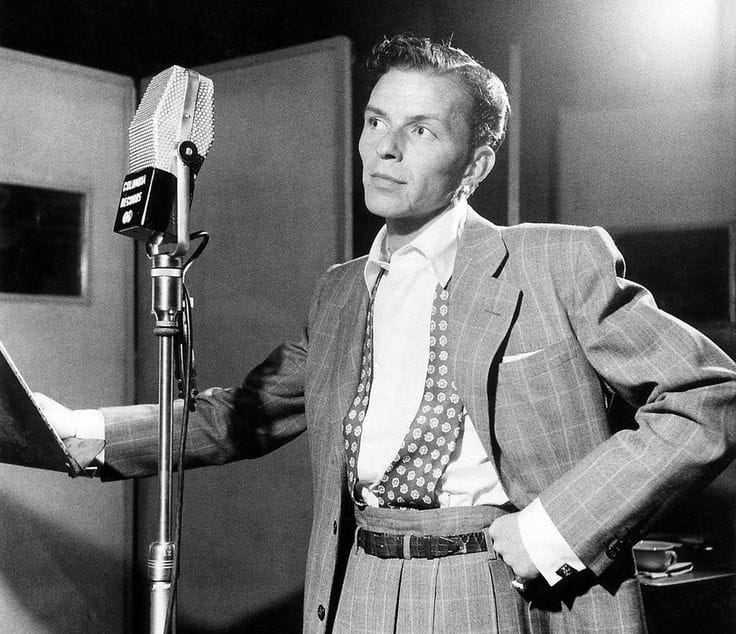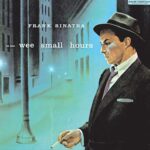
“Searching for perfection in the midst of chaos”
By Mahnuel Muñoz
In the late 1940s, Frank Sinatra’s career was going through a severe crisis due to changes in popular taste and the artist’s erratic behavior in his personal life.
However, his work in the recording studio remained exquisite, as attested to by the following excerpt from the extraordinary book “Sessions With Sinatra” by Chuck Granata:
“A little-known Sinatra session, from his transition period and part of a lacquer disc preserved by Columbia, allows us to enter the studio environment. The recording leaves no doubt about who directed the sessions or how precise and infallible the singer’s intuition was.
The recording took place on July 10, 1949. At one point during this afternoon session, held in Columbia’s cavernous studio on Thirtieth Street, Sinatra, arranger Sy Oliver, and conductor Hugo Winterhalter were preparing to listen to a second instrumental reading. from George Siravo‘s arrangement of “It All Depends on You“. The music has a certain jazzy character, with a formation typical of a big band, without strings. In the midst of the hustle and bustle of the studio, the singer listens attentively to a brass passage and thinks that something is not working. Even before starting the session, he had already detected some problem in that piece. For some reason (perhaps a transcription error), the score needs to be revised, and with Siravo on the East Coast, Winterhalter and Sinatra ask Sid Cooper (a talented solo sax player and composer) to rewrite both songs, “It All Depends on You” and “Bye Bye Baby.” Oliver also contributes some last-minute orchestral corrections.
Now, at the actual moment of recording, the orchestra has read the score and Sinatra joins them on the second pass to begin laying out the text. The song is a little long to be inserted on a single side of a standard 78 rpm record, so they make the decision to cut into a strident sax solo, played by Wolfe Tanninbaum. There is discussion about the cut, but, after Winterhalter has made the necessary adjustments to the arrangement, Sinatra still believes that there is some error between the trumpets or trombones.
“I would like to hear the introduction, with the brass muted,” he tells the director. The musicians comply, playing a short section for Sinatra’s approval. After hearing the passage, Sinatra gives very precise instructions to the musicians and technicians: “I would like this to sound as compact as possible. Trombones: maybe you have to turn around and focus the bell a little towards the microphone. I want to hear you all six as a single unit,” he says. The engineer installs a double-sided microphone in order to capture the exact tonal texture Sinatra desires. The section plays the passage again, but the singer is not satisfied. “Once again, Hugo, could you lower the volume of the saxes and the first clarinet? Can the trumpets and trombones play softer? I mean more piano,” he insists.
With the trombone problem rectified, Sinatra, now in the booth, shifts his attention to the rhythm section. He first addresses drummer Terry Snyder: “Have you put a mute on the bass drum? It rumbles a little.” Then, without the slightest hesitation, he addresses the studio technicians: “Can you put a rug that covers the entire base of the bass drum?” Having said this, he speaks to the pianist: “Sorry, Johnny Guarnieri.” Why don’t you play something, some improvisation, and then let the rhythm section come in. We have to find the perfect balance.” Johnny Guarnieri begins to improvise on the melody, while bassist Herman “Trigger” Alpert, drummer Snyde and guitarist Al Caiola join in. After a moment, Sinatra continues giving instructions – “Bass and guitar: Trig, can you come a couple of inches closer, or move the mic, if you prefer? And the guitar, let it also come a little closer, just a little bit, that’s it, that’s enough.”
After carefully monitoring all the reorganization of microphones, cables and instrumentalists, Sinatra asks the group to play again to see if his ideas work musically. After some recording tests, Manie Sacks, Sinatra’s omnipresent assistant, confirms that the changes the singer has introduced work. He exclaims enthusiastically: “That’s so much better!“
















